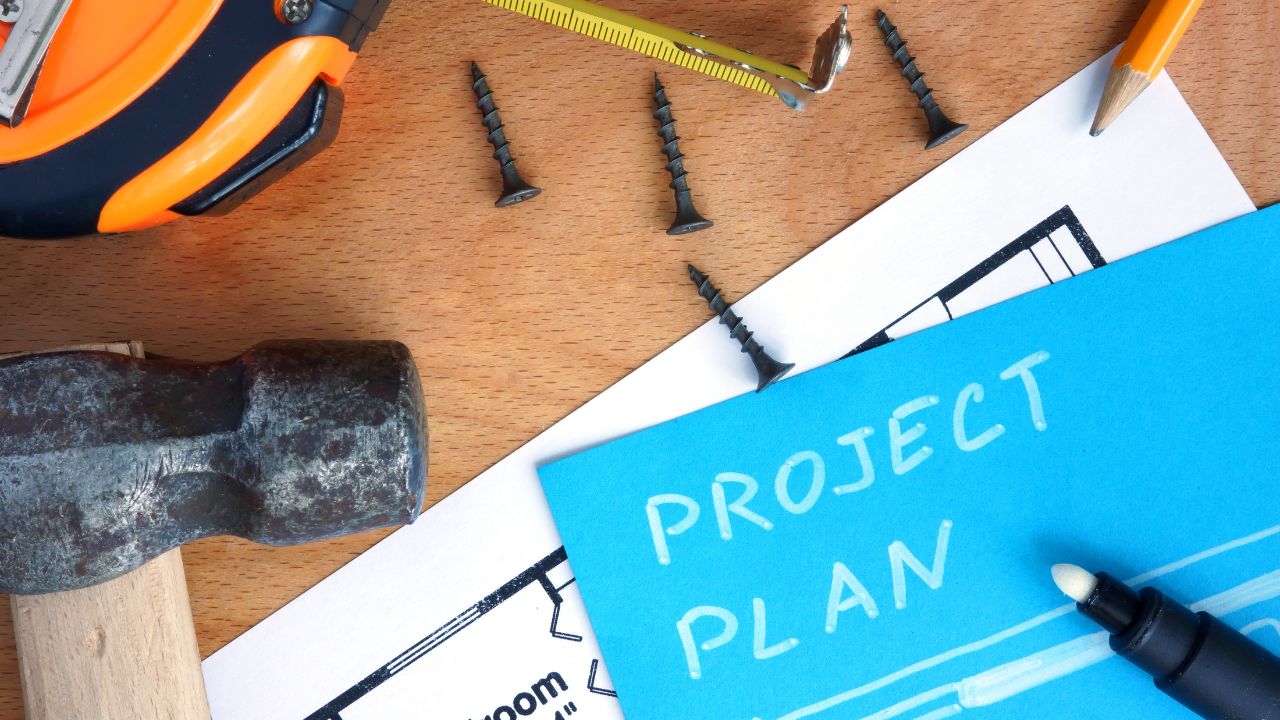Home improvement projects can be exciting and rewarding, but they can also be daunting and overwhelming.
To avoid stress and ensure success, efficient planning and execution are key.
In this article, we’ll discuss six steps for planning and executing home improvement projects in an efficient and effective way.
1. Define the Project Scope

Defining the project scope is an essential step in planning a home improvement project.
It involves setting specific goals for the project and creating a project plan that breaks down the work into smaller, more manageable tasks.
This helps to ensure that all necessary tasks are accounted for, and that the project stays on track.
To define the project scope, it’s important to set SMART goals. SMART stands for specific, measurable, achievable, relevant, and time-bound.
Setting SMART goals can help to keep the project focused and ensure that everyone involved understands what needs to be accomplished.
For example, a SMART goal for a kitchen renovation project might be to replace the countertops with granite within four weeks.
Creating a project plan involves breaking down the project into smaller tasks and determining the order in which they will be completed.
This can help to identify any dependencies between tasks and ensure that everything is completed on schedule.
Project plans can be created using tools like Gantt charts or simple to-do lists.
Defining the project scope is important because it can help to avoid scope creep, which is when the project expands beyond its original goals.
Scope creep can cause delays and budget overruns, so it’s important to clearly define the project scope at the outset of the project.
2. Set a Realistic Budget

Setting a realistic budget is a crucial step in planning a home improvement project. A budget helps to ensure that the project stays on track financially and prevents overspending.
To set a realistic budget, homeowners should research the costs of materials and labor for their project.
This can help them to determine how much money they will need to complete the project successfully.
When creating a budget, it’s important to prioritize expenses based on their importance to the project.
For example, if the project involves renovating a kitchen, new appliances may be more critical than expensive lighting fixtures.
By prioritizing expenses, homeowners can ensure that they are allocating their budget effectively.
It’s also essential to leave some room in the budget for unexpected expenses. These might include unforeseen repairs or delays that arise during the project.
Homeowners should consider adding 10-20% to their budget to account for these unexpected costs.
Finally, it’s critical to stick to the budget once it has been created. This can be challenging, particularly if unexpected expenses arise.
However, by sticking to the budget, homeowners can ensure that their project stays on track financially and is completed within a reasonable timeframe.
3. Gather the Necessary Tools and Materials

Having the right tools and materials for the job is essential for efficiency and quality.
Make a list of all necessary tools and materials early on in the planning process, and shop around for deals and discounts.
Consider renting tools instead of buying them if they will only be used for one project. This can save money and reduce clutter in the garage or shed.
Also, having a reputable supplier or contractor as your source of quality tools and materials is vital.
When you visit ProCraft or a reliable contractor in your locality, you can explore various options for your home improvement project.
Ensure that the store or contractor offers a wide selection of home improvement products, including power tools, hand tools, and building materials.
When homeowners find everything they need in one convenient location, they make their project planning process more efficient and streamlined.
4. Create a Schedule

A schedule helps to ensure that the project stays on track and is completed within a reasonable timeframe.
To create a schedule, homeowners should break the project down into smaller tasks and assign each task a deadline.
When creating a schedule, it’s important to be realistic about the amount of time needed for each task.
Homeowners should take into account any dependencies between tasks and account for unexpected delays, such as inclement weather or shipping delays.
It can be helpful to use project management tools like Gantt charts to create a schedule.
Gantt charts allow homeowners to visualize the project timeline and adjust it as needed. Homeowners can also use simple to-do lists to keep track of tasks and deadlines.
Once a schedule has been created, it’s important to stick to it as closely as possible. This can help to ensure that the project stays on track and is completed within the expected timeframe.
Homeowners should communicate the schedule to anyone involved in the project, including contractors or family members helping with the work.
5. Get Help When Needed

Knowing when to ask for help is important for efficient home improvement projects.
Homeowners should consider hiring professionals for tasks that require specialized skills, such as electrical work or plumbing.
Delegating tasks to family and friends can also help to save time and reduce stress.
It’s important to communicate clearly with anyone helping with the project to ensure that everyone is on the same page.
Providing clear instructions and timelines and expressing appreciation for their help can help to ensure that the project runs smoothly.
Getting help when needed can also help to prevent injuries or accidents.
Homeowners should never attempt tasks that are beyond their skill level, as this can lead to accidents or damage to the home.
6. Stay Organized

Staying organized is an essential aspect of planning and executing a home improvement project.
Being organized can help homeowners to keep track of tasks, stay on schedule, and ensure that the project stays within budget.
One way to stay organized is to create a centralized location for all project-related materials. This might include plans, contracts, receipts, and any other important paperwork.
Having everything in one place can make it easier to find what’s needed quickly and can help to prevent important documents from getting lost.
Using project management tools can also help homeowners to stay organized.
For example, homeowners can use to-do lists or online project management software to keep track of tasks and deadlines.
These tools can help to ensure that nothing falls through the cracks and that the project stays on track.
Another way to stay organized is to communicate clearly with anyone involved in the project. This might include contractors, family members, or friends helping with the work.
Providing clear instructions, timelines, and expectations can help to ensure that everyone is on the same page and can help to prevent misunderstandings or delays.
In conclusion, efficient planning and execution are crucial for successful home improvement projects.
By defining the project scope, setting a realistic budget, gathering necessary tools and materials, creating a schedule, getting help when needed, and staying organized, you can ensure that your home improvement project is a success.
Remember to take breaks and celebrate milestones along the way to stay motivated and energized.



